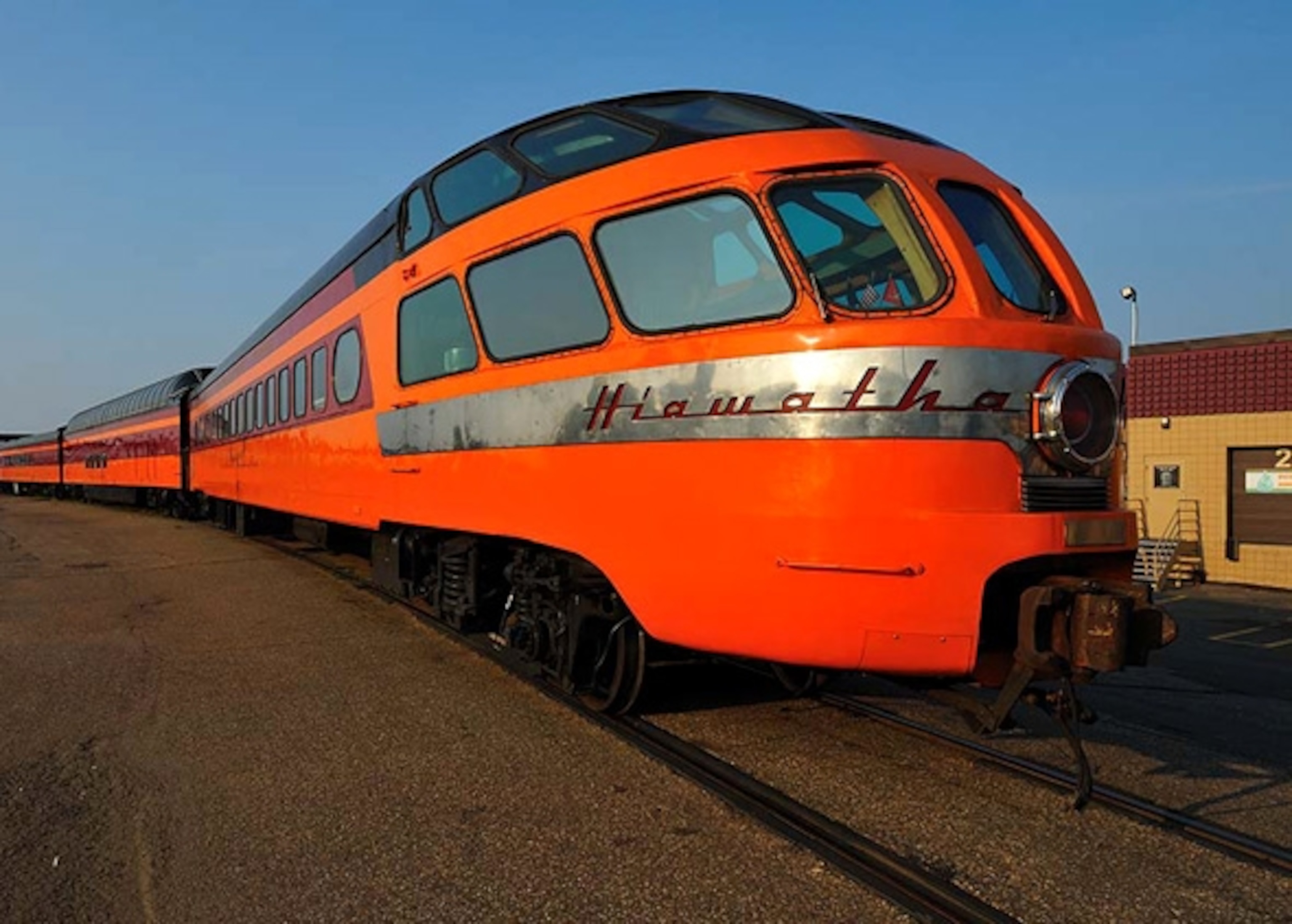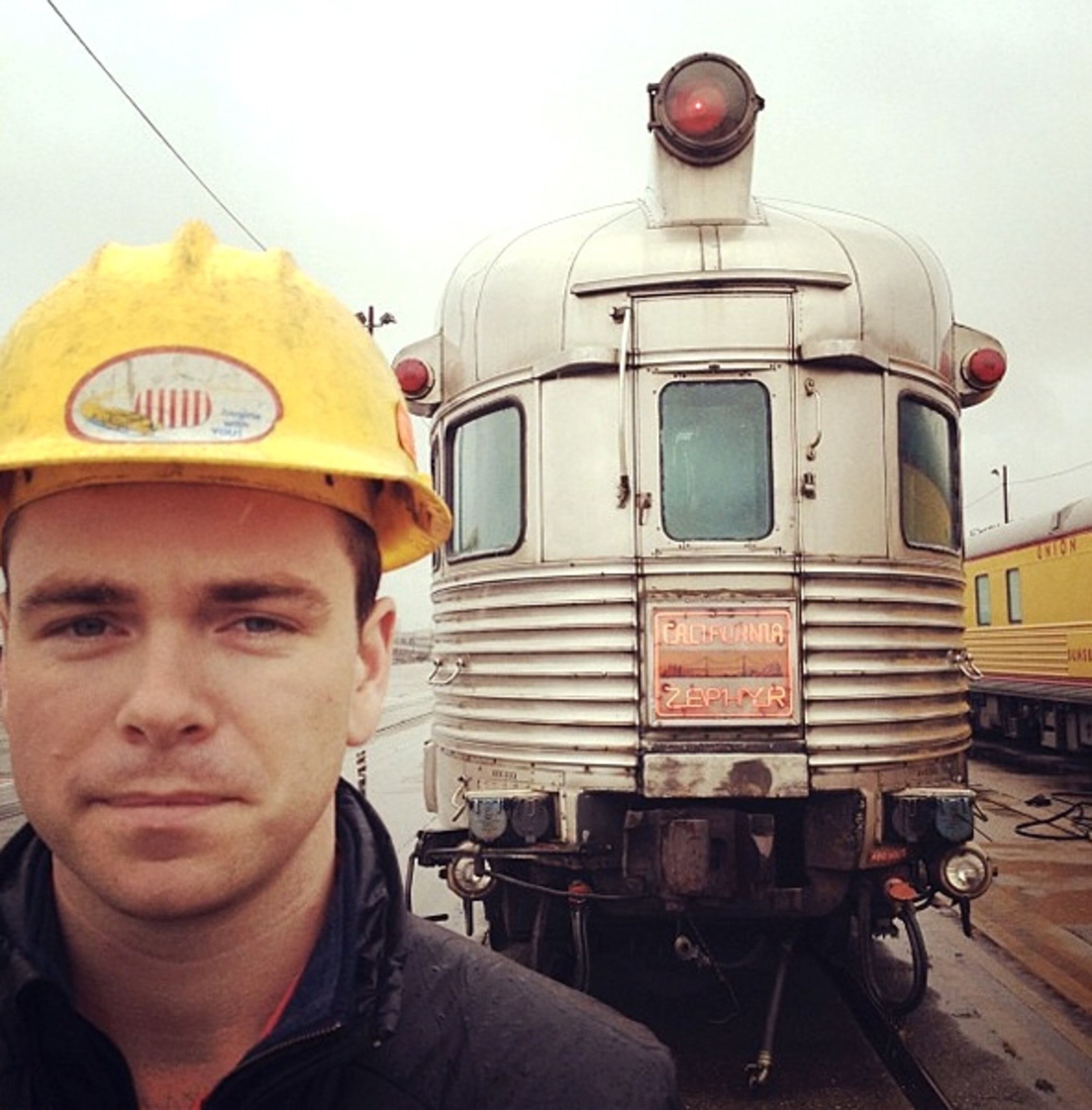
Inside the Millennial Trains Project
You’ve probably been hearing a lot about millennials these days — from an ultimately positive review in Time to whole books on the subject with titles ranging from Generation Me to Millennial Momentum: How a New Generation Is Remaking America. (You can even take a quiz to find out “how Millennial” you are.)
While critics and scholars may quibble over the birth range associated with the generation, there’s no doubt that 25-year-old Millennial Trains Project founder Patrick Dowd belongs to this controversial cohort.
I sat down with Patrick to ask him about the venture he’s currently getting off the ground: a 10-day train journey from San Francisco to Washington, D.C., with 40 enterprising millennials on board.
This is what he had to say about the epic undertaking and the generation that — whatever it may be — is sure to shape our global future.
Q: What inspired the Millennial Trains Project?
A: The idea comes from India, where I helped lead a similar trains project as a Fulbright scholar. This journey has been going on there for about 10 years and has become a totem to the aspirations of young and enterprising people in that country. Last year 20,000 millennials applied for 400 spots.

When I came back from India, I was working in investment banking at J.P. Morgan in New York, right as Occupy Wall Street was coming to its height. I felt there was a more positive way to respond to the dissatisfaction that many people felt with where their country was, and I thought it would look more like this trains project from India than the protests that were going on outside our offices. So I left my job.
Q: Why trains?
A: Trains have played a huge role in shaping America’s culture. You see it everywhere from our language to our art to our infrastructure. They evoke nostalgia because they reconnect us to our origins.
At the core of this whole project is the idea that journeys build leaders. In India it’s called a yatra. The train journey [I helped organize there] is called Jagriti Yatra, signifying the awakening of the entrepreneurial spirit in India.
I think this idea exists everywhere. Every culture has myths about why that is, and so do we. By incorporating trains into the project, we’re tapping back into this idea of the pioneering spirit that built our country.
Q: Why millennials?
A: In India the whole idea of “rising India” is pervasive, especially amongst the younger generation. I was really taken aback by the experience on the train in India, seeing people my age so committed to bridging the gap between where their country is and where they want it to be.

The verdict is still out about millennials and what we’re going to do or be. Are we lazy or heroic? In the U.S., I’ve noticed a lowering of expectations about what we can accomplish. The train is meant to go against that by providing a dose of optimism and a platform for discovering opportunities.
I’m a millennial, so maybe it’s a self-centered thing.
Q: People have to earn their way onto the train, correct?
A: Applicants get on the train by pitching a project and raising money — $5,000 — to earn their spot. This crowd-funding element means the opportunity is accessible to anyone.
The project requirements are open-ended, so it’s a chance for participants to explore whatever their personal, professional, or creative frontier is on a national scale. It could be something that’s very closely related to the work that they do on a daily basis or a complete departure.
Q: How is this different from a TED talk on wheels?
Is this an inspiring and informative initiative that has some similarities to TED? Yes. But the emphasis on action, connection to landscape, and the goal of having these ideas contribute to the welfare of communities across the country make it unique.
My hope is that people who hear about this project and interact with it along the way will begin to see a picture of the diversity, creativity, and enterprising nature of this rising generation. I think this will definitely send a message to older people who have an impression of millennials, though this isn’t about changing their minds. I think the more important value is changing the minds of kids in grade school and high school — giving them the sense that the generation a few years older than they are is taking ownership over their future.
Like everything in American history, this project is an experiment. We feel it’s definitely an experiment worth pursuing — the first of many journeys.
Q: Have you been surprised by the applications you’ve seen so far?
A: The proposals keep getting better. There’s a sort of learning that’s happening; people are looking at the project ideas other applicants have submitted, and they’re getting sharper and more creative.

An oncologist from Cold Spring Harbor Laboratory is launching a project where she is creating original artwork based on groundbreaking innovations in each locality’s scientific community. There’s a young graffiti artist from South Central L.A. who is co-creating murals for social change and a digital press secretary at the White House who’s proposing a project that’s all about poetry, because that’s what she loves, but something she doesn’t get to do at work.
It’s as if the train is this big rock and all the applicants are coral. At the end [of the journey] we’ll have an awesome reef with all this aquatic life on it.
Nuts and Bolts
Q: Who will be on the train?
A: There will be 40 millennials along with 12 mentors and 12 staff at any given time.
Q: How does it work?
A: We travel by night, stopping each day in a different locality. Three things happen each day: a “local innovation showcase” where we see what interesting new things are starting to crop up in each community, followed by six hours of free time where participants advance their own projects. The third part happens back on the train where we have seminars from distinguished guest speakers responding to the prompt, “Where are the new frontiers?”
Q: How can folks apply?
A: On our website, www.millennialtrain.co. The deadline has been extended to July 15, 2013.
Q: What does the application consist of?
A: The application is very similar to those of a Kickstarter campaign. They need to answer short questions that ask what is your project, what does it aim to accomplish, how do you intend to share your experience with others, and why are you applying on the train? Add a short one- to two-minute video introducing yourself and your project and why you want to get on the train. It’s meant to be something you could do on a Saturday afternoon.
Q: Can only Americans apply?
A: No – anyone can apply. That’s an important point because our perception of ourselves as a nation has always been shaped by the observations of foreigners. We’ve been really excited to see that creative, enterprising, and civic-minded people from other countries want to come on board. I think we’ll see ourselves in interesting and different ways through their eyes.
Q: Once people meet the threshold of $5,000, are they automatically on?
A: Yes. The first 40 people to reach their fundraising goal automatically get on. It’s definitely a race, so people who apply early have the best chance of getting on board.
Leslie Trew Magraw is the editor of National Geographic’s travel blogs. Follow her story on Twitter @leslietrew.
